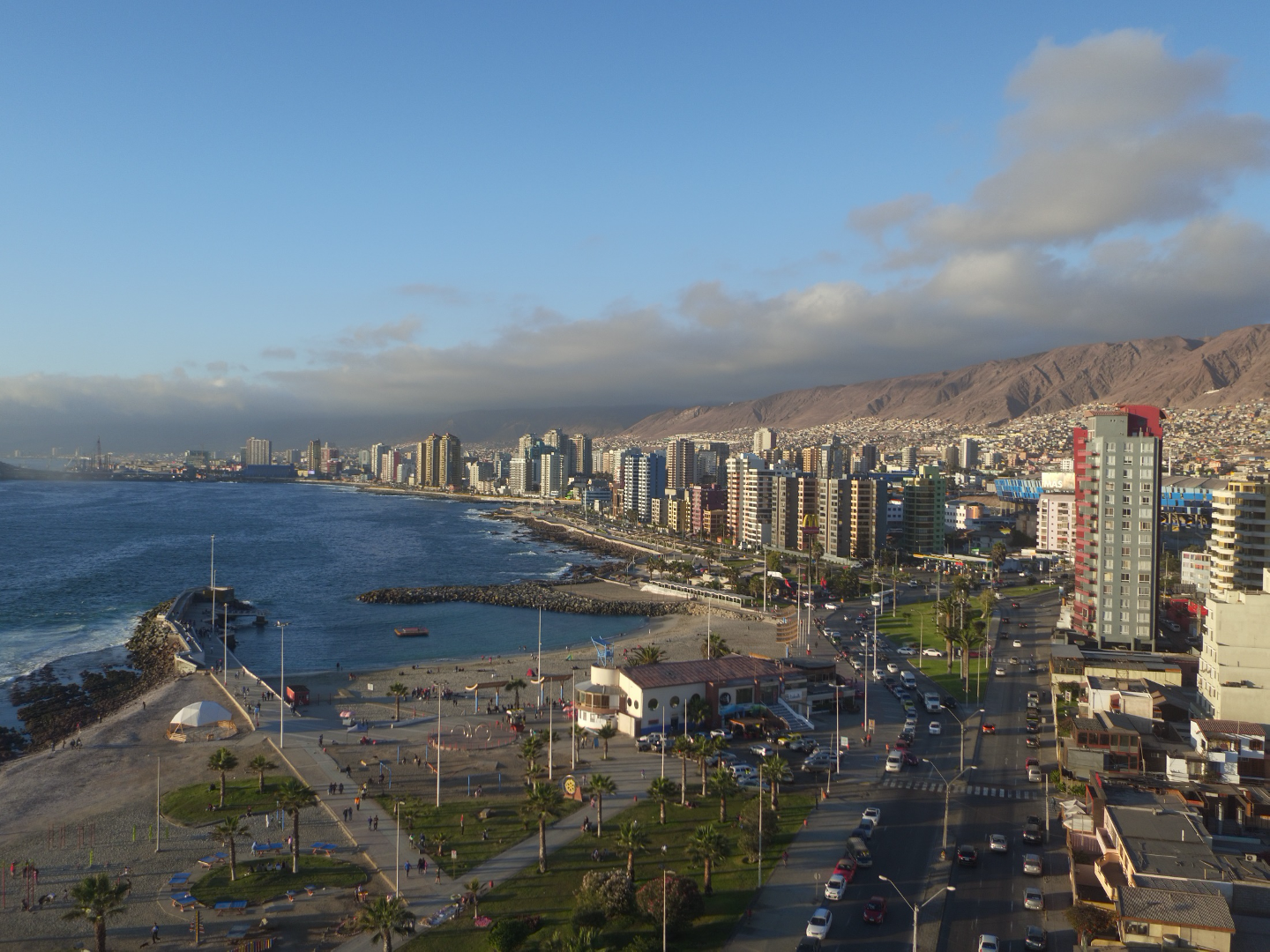Antofagasta enters the final stage of its Sustainable Urban Mobility Plan elaboration

In October 2018, the Chilean city of Antofagasta started to bring together all its existing initiatives and plans under a common vision and objectives to move towards a more sustainable mobility focused on people's well-being.
This was possible thanks to a Sustainable Urban Mobility Plan (SUMP), which was elaborated with the MobiliseYourCity methodology and implemented by the German Development Cooperation (GIZ) through the EUROCLIMA+ programme. The project has just completed its Measure Development phase and is now entering its final phase.
Antofagasta is located in the north of Chile. It lies on the coastal edge and, like most of Chile's topography, is a long, thin region, 30 km long and 2 km wide. In addition, it is a mining capital, which impacts on pollution rates. The city is home to 361 people and 812,000 trips are made per day, distributed in the following modal split:
- 36% by private car
- 34% by public transport
- 29% by walking
- 0.33% by bicycle
According to Hugo Pizarro, local project manager from the Planning and Development Division of the Regional Government of Antofagasta, with the SUMP they aim to achieve the inversion of the mobility pyramid to favour pedestrian and bicycle modes.
For this purpose, the SUMP Cycle of the MobiliseYourCity methodology has been followed. This work has been carried out with the technical and financial support of the EUROCLIMA+ programme, with an overall budget of 500,000 euros provided by the European Union, and the implementation of GIZ.
In mid-2020, the Analysis and Diagnosis phase was completed, which consisted of the establishment of a baseline that allowed the state of mobility in the city to be diagnosed and the main challenges to be identified.
This was followed by the definition of Principles, Objectives and Targets for the SUMP, which generated a common political and technical framework for the selected measures. This was jointly defined through workshops and meetings between public authorities, the private sector, citizens and academia.
In order to achieve this task, a Collective Participation Process for the Antofagasta SUMP was started in December 2020, involving more than 30 representatives from civil society, public and private sectors. This initiative guaranteed citizen participation in the different phases of the SUMP.
At the same time, four surveys were carried out to determine the perception of the citizens of Antofagasta regarding the diagnosis, scenarios, vision and objectives and prioritisation of measures for the Sustainable Urban Mobility Plan.
The conclusion of the Measures Development stage has provided a technical document that includes the selection of actions to be implemented, their prioritisation, modelling and cost estimation. These will be contained in the Antofagasta SUMP and allow entering a more operational level. For their definition, a broad participatory process was carried out, in which experts and decision-makers, as well as trade and civil society organisations, met to give a cross-cutting validity to the final selection.
The first step for the selection was to generate a long list of measures (approximately 60 measures), which were proposed from different sources, such as city consultations, criteria of the consultant supporting the process, collection of measures announced or planned prior to the SUMP, among others.
These measures were then prioritised and systematised to generate a short list (33 measures) on which work would continue for their definitive incorporation into the plan.
Once the short list was generated, it was sorted into packages of measures. These packages operate as a grouping of measures that share a common objective and are mutually enabling. The groups generated correspond to:
- Public Transport
- Active Transport
- Car Disincentive
- Land Use and Public Space
- Logistics Transport
- Intermodality
- Governance
Subsequently, each measure contained in the packages was characterised in descriptive sheets that allow a first approximation of the steps required for its implementation, associated institutions, estimated costs, among other characteristics.
Finally, traffic and emissions modelling and cost-benefit estimations were carried out to generate prospective scenarios of the impact of the measures on the city, assessing their relevance and adjusting characteristics that might not be leading to the fulfilment of the objectives and goals of the plan.
With the completion of the Measures Development stage, the Antofagasta SUMP enters its final stage, which focuses on managing the future implementation of the plan and generating the appropriate monitoring mechanisms. The launch of the plan is expected to take place in the last quarter of this year.